Description
How to make an inexpensive portable wood cooking system.
Sommaire
Sommaire
- 1 Description
- 2 Sommaire
- 3 Introduction
- 4 Étape 1 - How it Works
- 5 Étape 2 - External Chamber
- 6 Étape 3 - Combustion Chamber
- 7 Étape 4 - Support du plat
- 8 Étape 5 - Montage final
- 9 Étape 6 - Utilisation
- 10 Étape 7 - Remarques
- 11 Étape 8 - Fabrication d'un réchaud de plus grande taille
- 12 Notes et références
- 13 Commentaires
Introduction
Factors relating to cooking remains one of the biggest challenges in the areas of health and energy. In many developing countries, the classic three-stone cooking fire is the technology that is most commonly used.This is extremely inefficient (with a thermal yield of 10 to 15% if sheltered from the wind and 5% if exposed) and releases toxic smoke into dwellings.There are two concerns with this:
- Energy output is so poor that a huge amount of wood is needed to cook one meal.
This leads to extensive deforestation in certain parts of the world.
- Evidently, this creates certain problems with regards to health: smoke given off causes respiratory problems for people in the community and the reduces their quality of life. A technology that uses the same biomass but has a higher output
is:
The micro gasifier which is a low-tech and very economical way of cooking and, if well-made, has an output higher than a three stone stove (thermal output of approximately 35%). Output is even higher with the enhanced industrial version (which has a thermal output in the order of 45%)
It is possible to make a very basic model out of tin cans, but this will have a limited number of features. However, this can be very useful for instance for heating water, cooking small quantities of food and for doing demonstrations/teaching purposes.
More complex models do exist which, although more costly, tend to last longer and allow control over the power you can get from the flame.
Matériaux
- A large tin can (in terms of height and width) (1): for the external chamber;
- A tin can which is slightly shorter and thinner (2): for the combustion chamber;
- A tin can of the same diameter to the combustion chamber (3): for the stand on which the pan sits.
Outils
- Marker
- Wire cutter
For drilling, there are 2 options:
- A drill and 2 drill bits:11mm and 7mm respectively
- A hammer and a large nail (or a metal punch)
- A wooden block, a part of which can be inserted inside the tin can.
Étape 1 - How it Works
This is based on the concept of gasification: Wood is heated in an environment containing very little oxygen, giving off combustible gases known as “Syngas” which are then burnt in the upper part of the stove.
The micro-gasifier is lit from the top. Primary air, flowing into the lower part, passes through the mass of combustible fuel, maintaining a pyrolysis layer which then drops as the combustible gases are released. Secondary air is forced into the top of the stove, supplying the oxygen that is needed for combustion of gases emitting in an upward direction.
Better results are obtained with forced convection, using an integrated fan under the grid which supports the fuel. However you will need a reliable supply of electricity for this.
The temperature at which combustion takes place is around 800°C and thermal yields are between 30 to 45% depending on how well it is made and the quality of the insulation.
It is light, compact, reliable, uses little fuel and, in the right circumstances, produces reusable charcoal which can be used in other applications. This system is therefore extremely low-tech and very efficient compared to conventional systems used throughout the world.
To compare, the diagram opposite shows the energy performances of various systems. The micro-gasifier here is called “wood gas stove”.
Étape 2 - External Chamber
- Mark the positions of a approximately 10 holes, spread out evenly all around the upper part of tin can (1).
- then drill where marked using a 12mm drill bit (or with a hammer and nail) (For a cleaner finish, we recommend that you make pilot holes with a 7mm drill bit before tackling it with a 12mm drill bit).
Note:To make things cleaner and easier, you can clamp the wooden block onto a vice and use it as a support when making the holes in the tin can.
Cut the bottom out of the large tin can (1). The opening must be of a slightly smaller diameter to that of the small tin can (so that it can go inside)
Étape 3 - Combustion Chamber
- Mark the position of approximately 15 holes spread out over the whole surface on the bottom of the tin can (2). - Mark the positions of a approximately 10 holes, spread out evenly all around the upper part of tin can (2).
2 - Percez ensuite aux emplacements marqués avec une mèche de 7 mm (ou avec le marteau et le clou).
Étape 4 - Support du plat
1 - Marquez l'emplacement d'une dizaine de trous répartis équitablement tout autour de la petite boite de conserve (3).
2 - Percez ensuite aux emplacements marqués à l'aide d'une mèche de 12mm (ou avec le marteau et le clou).
3 - Découpez le fond de la boite.
4 - NB : Pour plus de facilité à l'utilisation, vous pouvez découper un trou large sur le côté de la petite boite (3) : il permettra de facilement ravitailler le feu en bois !
Étape 5 - Montage final
1 - Encastrez la boite (2) dans la grande (1) comme indiqué sur le schéma.
2 - Déposez la boite (3) sur les deux autres boites encastrées.
Votre réchaud à pyrolyse est prêt !
Étape 6 - Utilisation
Même si ce type de cuiseur est plus propre que les cuiseurs "trois pierres", il dégage tout de même de fumées. C'est pourquoi il doit être utilisé dans un milieu très ventilé.
Le réchaud fonctionne avec des granulés de bois ou des copeaux de biomasses. Pour allumer le réchaud, remplir le réchaud et allumez dans la partie haute.
Pour éteindre le réchaud, attendez simplement que tout le bois soit consumé et que l'enceinte aie refroidie.
ATTENTION : LA TEMPERATURE DE COMBUSTION DU BOIS ET DES GAZ AVOISINE LES 1200°C. LE RECHAUD EST A UTILISER AVEC BEAUCOUP DE PRECAUTION : N'ESSAYEZ PAS DE DEPLACER LE RECHAUD LORSQU'IL EST ALLUME
Étape 7 - Remarques
Le système présenté ici est très simplifié et ne permet donc pas de gérer par exemple la taille de la flamme.
De part les matériaux utilisés, la durée de vie du réchaud est assez limitée.
Des versions améliorés de ce système sont en phase de test/validation dans différents contextes urbains, ceci du aux efforts de Paul Anderson, spécialiste des micro gazéificateur.
Des essais d'implantation ont eu lieu en Inde sans grande réussite: Il est en réalité compliqué de trouver des granulés ou de la biomasse en copeaux dans ces contextes, le prix du micro-gazéificateur optimisé se rapproche du coût de la cuisson au gaz, sans en avoir tous les avantages.
Étape 8 - Fabrication d'un réchaud de plus grande taille
Afin de pouvoir s'adapter à n'importe quel récipient ou conserve disponible utilisé en enceinte extérieure, il est possible de confectionner la chambre de combustion à partir d'une tôle, de préférence en acier inoxydable. Son épaisseur doit être de 1mm maximum pour une découpe à la cisaille à tôle. Il faudra découper des languettes et percer les trous dans la tôle à plat avant de la rouler et de la fermer par agraffe. L'utilisation d'acier inoxydable augmentera la durée de vie du réchaud. Les photos ci-contre montrent la fabrication d'un réchaud à partir d'un pot de peinture et d'une tôle en acier inoxydable de 1mm d'épaisseur. La tôle est usinée à plat avant d'être roulée et agraffée (l'agraffage consiste à replier sur environ 5 mm les deux bords d'une la tôle dans des sens contraires, avant des les marteler l'un dans l'autre pour vérouiller l'ensemble). Porter des gants pour éviter les coupures !
Notes et références
Télécharger le tutoriel ici
Rapport comparatif des différents types de cuiseurs par Planète Bois (en français): http://www.planetebois.org/glossaire/cuiseur-domestique-econome-cde/
Site internet du Docteur Paul Anderson, spécialiste des micro-gasifiers (en anglais): http://www.drtlud.com/
N'hésitez pas à commenter, partager, et agrémenter le tutoriel d'informations utiles à son amélioration.
L’équipe du Low-Tech Lab vous invite également à consulter sa Biblilowtech.
Yes
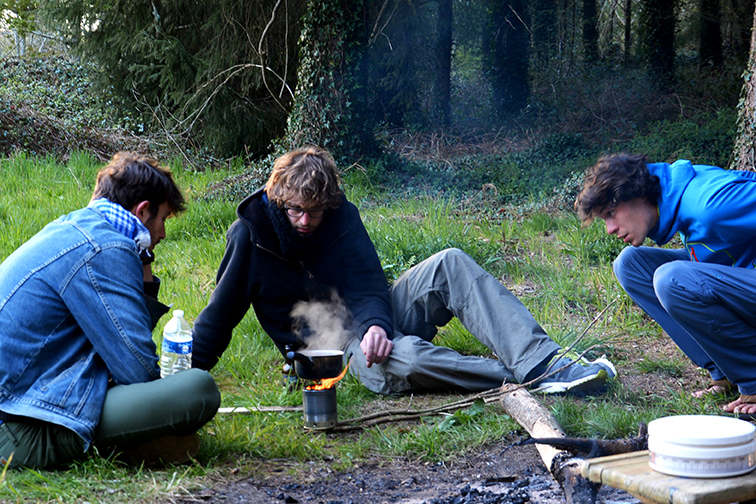
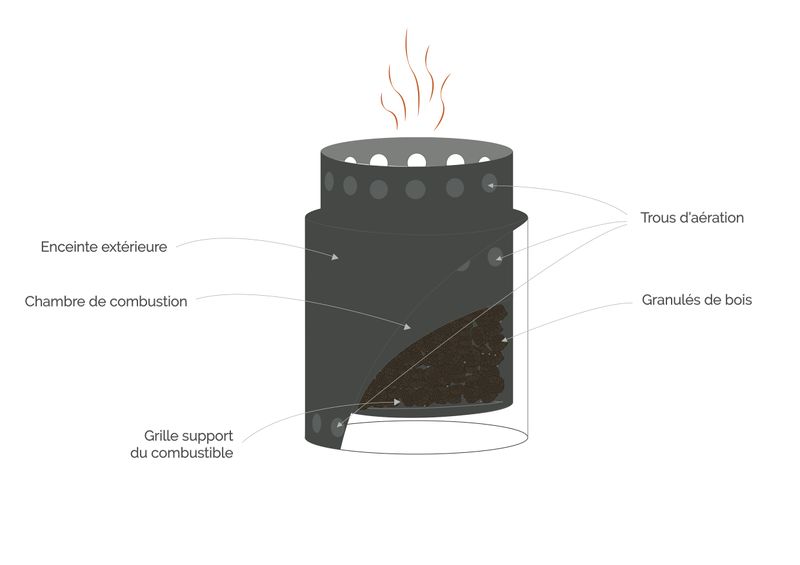
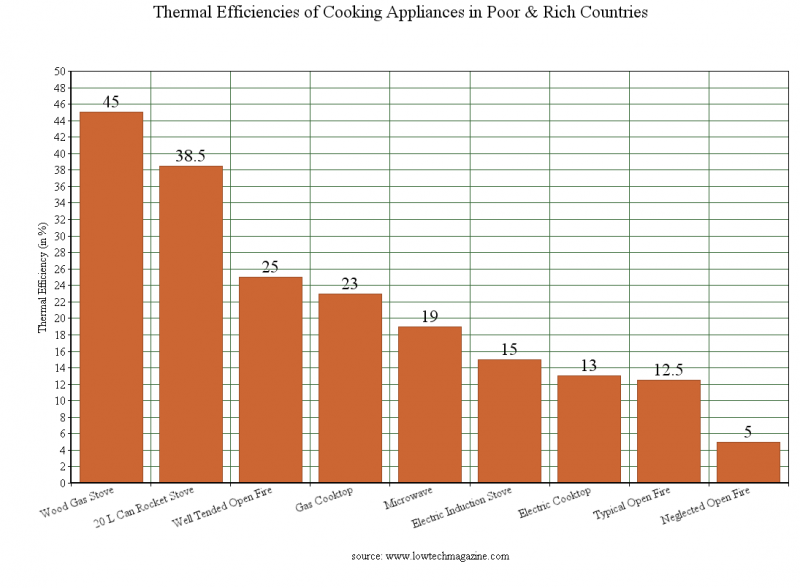
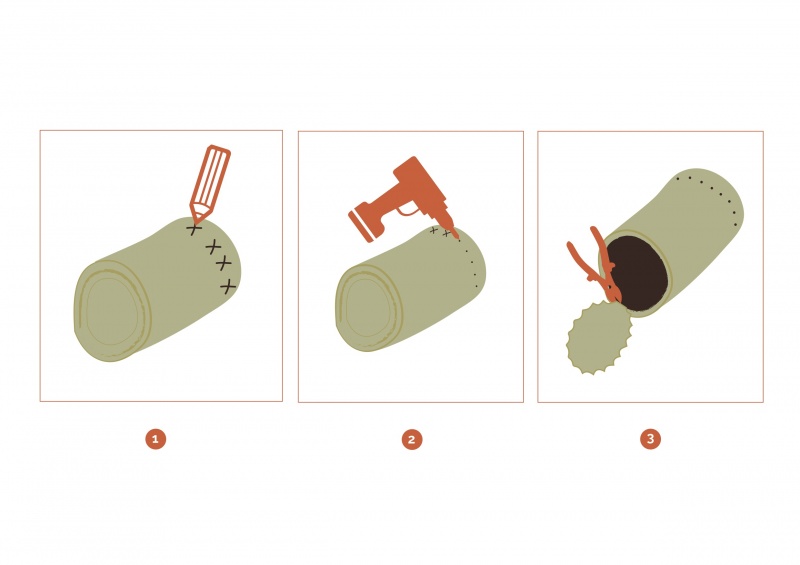
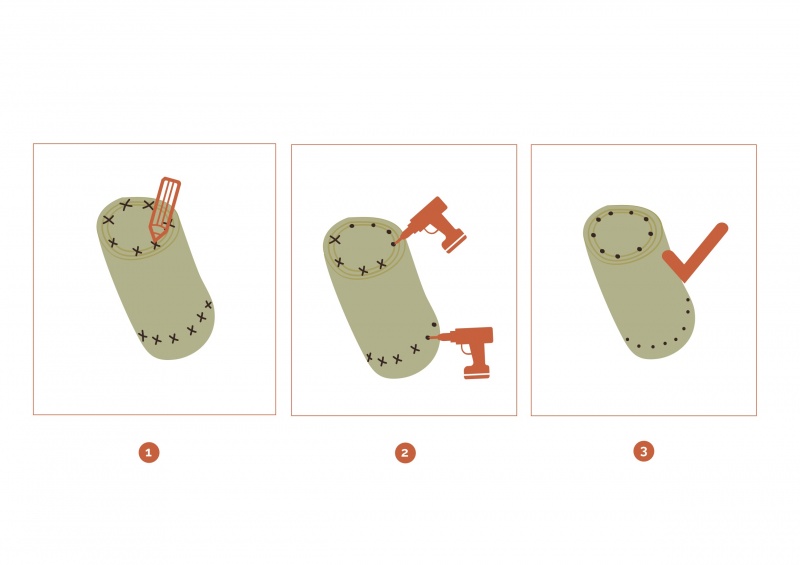
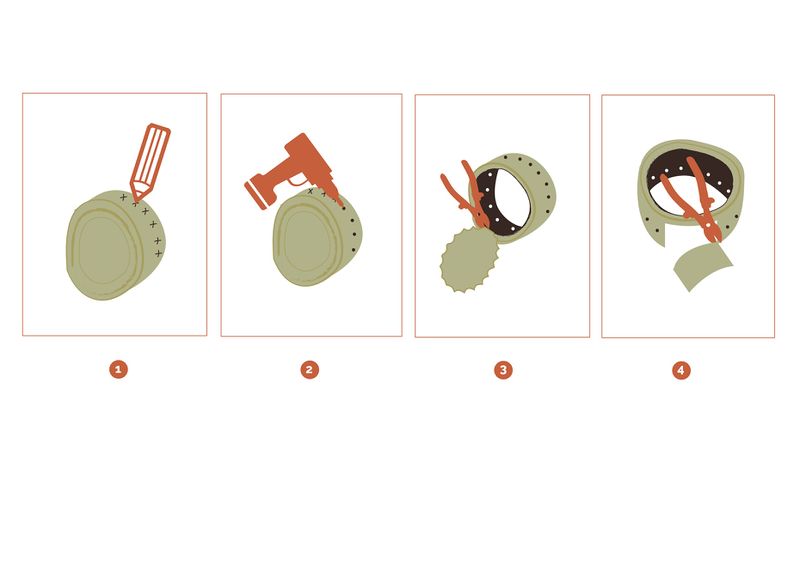
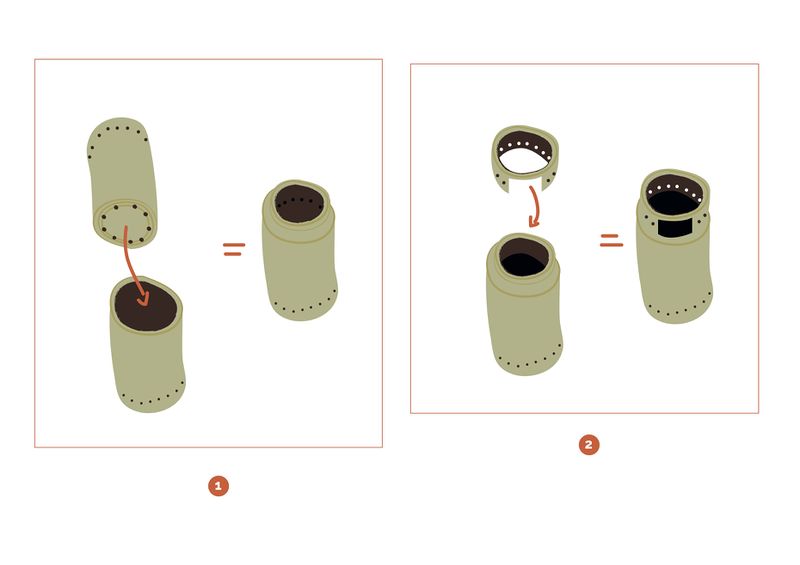
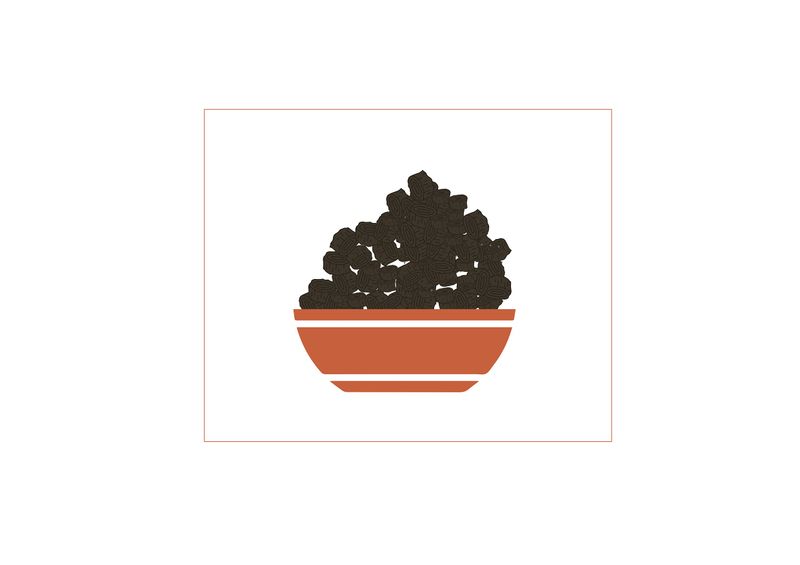
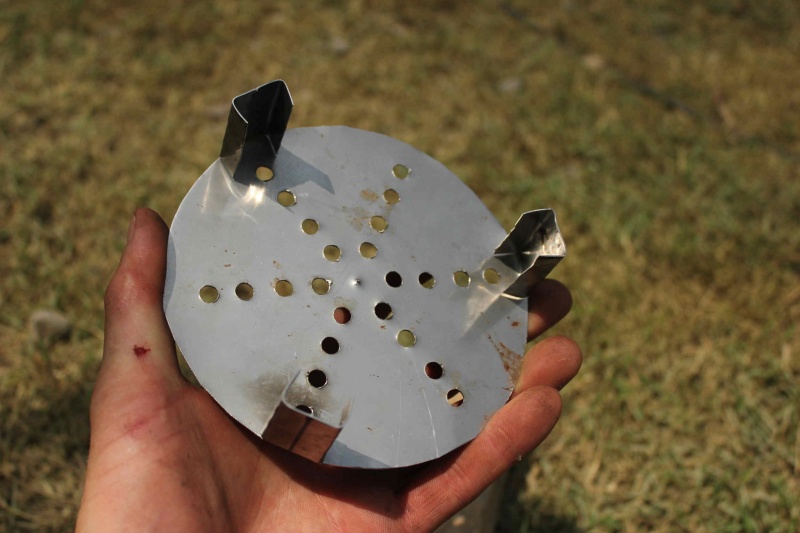
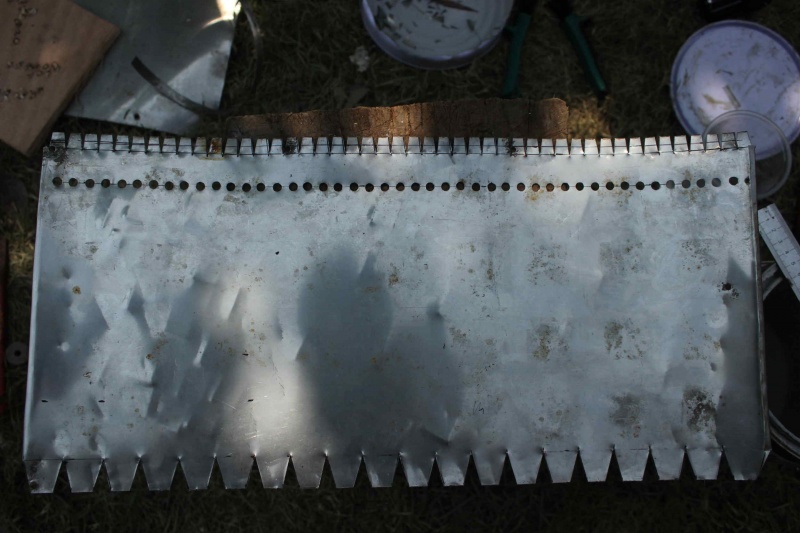
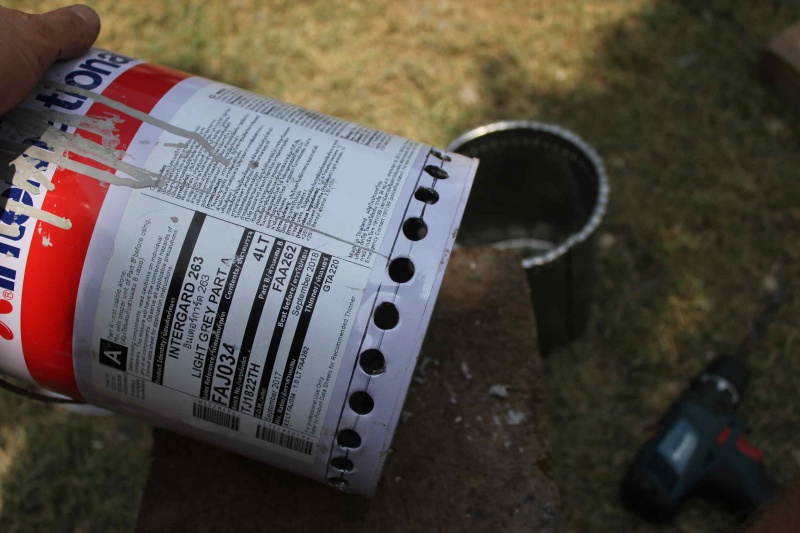
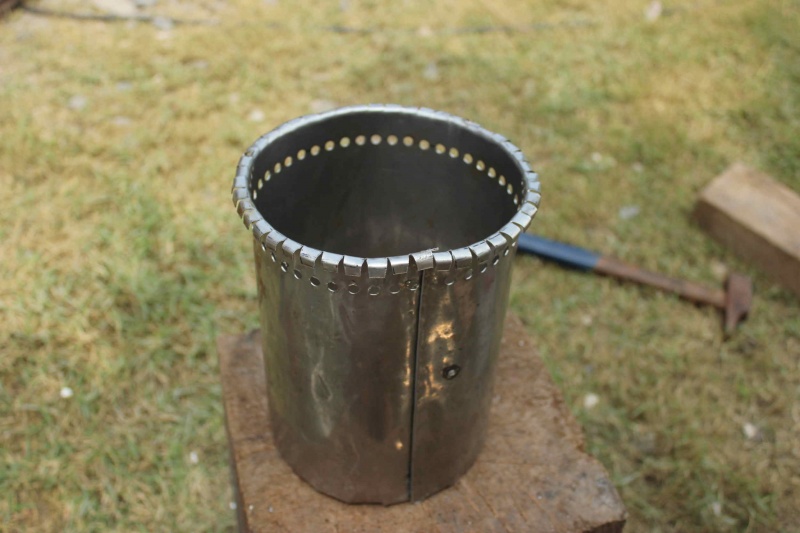
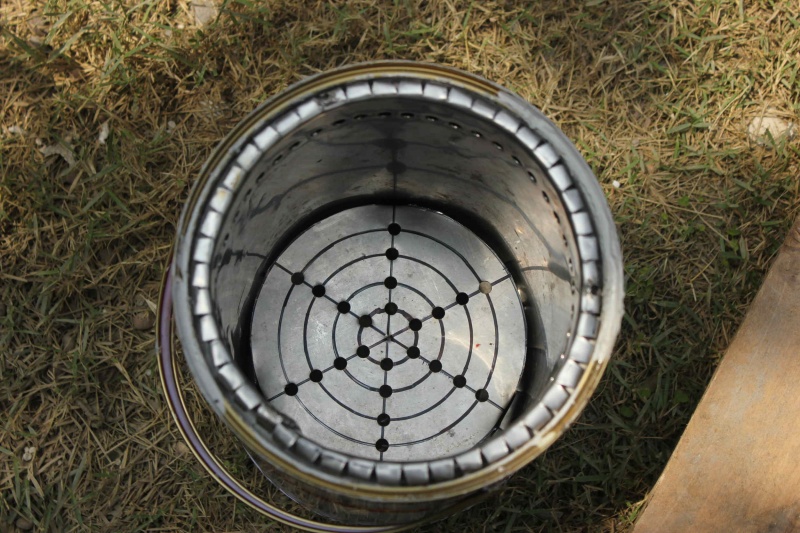
 Français
Français English
English Deutsch
Deutsch Español
Español Italiano
Italiano Português
Português